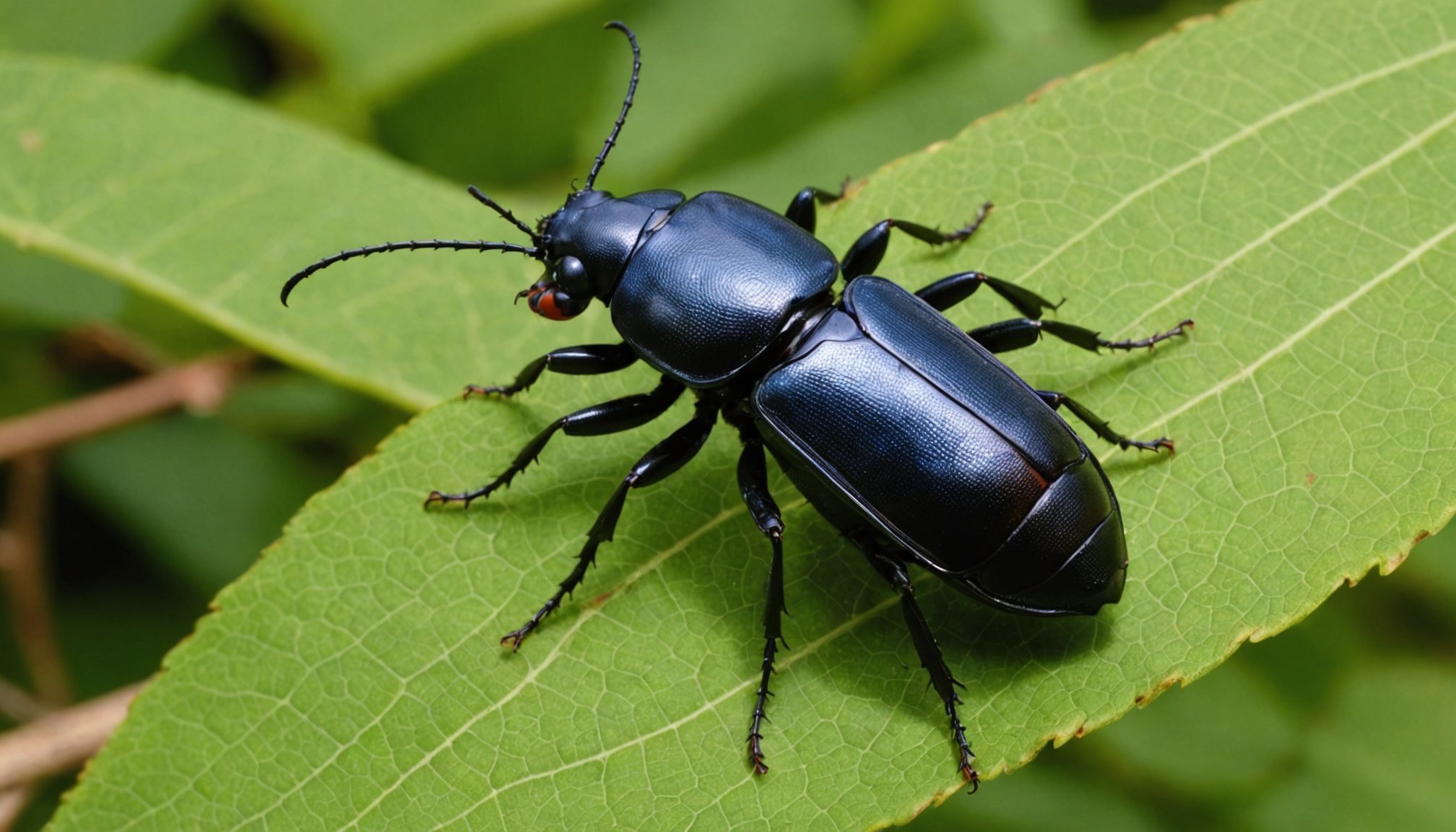Understanding Stag Beetles and Their Importance
The eco-system roles of stag beetles are multifaceted, playing a crucial part in maintaining ecological balance. These fascinating creatures thrive in decomposing wood, acting as natural recyclers transforming dead trees into nutrient-rich soil. This process is vital for plant growth, illustrating the ecological significance of supporting stag beetle habitats. By consuming decaying matter, they enhance soil health which in turn boosts local biodiversity.
Stag beetle conservation is becoming increasingly urgent as their populations face threats from habitat losses. Preserving these endangered populations is essential for the conservation of balanced ecosystems. Efforts toward stag beetle conservation involve protecting existing habitats and creating new ones that mimic their natural environments.
This might interest you : Revolutionizing UK Coastal Development: Cutting-Edge Approaches to Safeguard Marine Turtle Nesting Sites
The importance of preserving these habitats cannot be overstated. Stag beetles are indicator species; their presence signifies a healthy, balanced ecosystem. By conserving stag beetles, we play a part in ensuring the larger ecological networks remain intact and functional.
Additionally, the ecological advantages of supporting stag beetle habitats extend beyond the beetles themselves. Healthy stag beetle populations contribute to a thriving ecosystem that supports birds, plants, and other wildlife. Understanding these benefits highlights the critical need to support conservation initiatives and protect these ecologically significant species.
Also to discover : Enhancing City Ecosystems: The Crucial Impact of UK Community Gardens on Nature Conservation
Creating Ideal Habitats for Stag Beetles
Understanding the specific needs of stag beetles is crucial for effective habitat creation. These beetles primarily thrive in areas where decomposing wood, soil, and moisture are abundant. The stag beetle’s needs can be met by incorporating wood piles in your garden. This not only offers a convenient habitat but also aids the beetles in their natural recycling process, transforming dead wood into nutrients.
Practical Gardening Techniques
For those interested in gardening techniques to promote stag beetle conservation, consider utilizing logs, wood chips, or compost heaps. These materials create suitable conditions by mimicking the beetles’ natural environment. Ensure the area remains undisturbed and retains some moisture, both critical for the beetles’ survival.
Plant Species and Materials
When selecting plants, favour species that thrive in shaded and damp conditions. Local, native plants are more likely to support a robust ecosystem that benefits stag beetles and other wildlife. Oak trees are particularly beneficial, as their leaf litter and overall structure provide excellent resources.
Achieving optimal conditions for stag beetles in gardens not only supports their habitat creation but also encourages a healthier ecosystem overall. By focusing on these elements, gardeners can significantly contribute to the conservation of these vital creatures.
Legislative Frameworks and Conservation Efforts in the UK
Understanding the legislative frameworks supporting stag beetle conservation in the UK is pivotal for both protecting these unique insects and enhancing local ecosystems. The country upholds several conservation laws recognising the ecological significance of stag beetles and their need for specialised habitat protection. The Wildlife and Countryside Act 1981, for instance, lists them as a species of conservation concern, ensuring legal measures prevent habitat destruction.
Community-driven initiatives amplify the impact of these laws by fostering local engagement. Community programs like the Great Stag Beetle Hunt coordinate volunteers to map stag beetle populations, raising public awareness and promoting more protective legislation. This collective information helps guide governmental and organisational efforts to create and maintain crucial habitats.
Gardeners play a vital role in local conservation efforts as well. By embracing eco-friendly practices and creating suitable habitats in private gardens, they contribute significantly to sustaining stag beetle populations. Encouragement comes from community initiatives that provide resources and advice, facilitating participation in broader conservation networks. Through these concerted efforts, the preservation of both stag beetles and their natural environments becomes an achievable community-driven goal, encouraging biodiversity and environmental sustainability.
Engaging the Community in Stag Beetle Conservation
Community involvement is crucial for the effective conservation of stag beetles. Encouraging those around us to participate in initiatives not only raises awareness but also strengthens conservation outcomes through collective effort.
To educate others, consider hosting workshops or talks in local community centres. These events can disseminate vital information on the ecological role of stag beetles and their pressing need for habitat protection. Furthermore, creating informative flyers or social media campaigns can extend outreach, making the knowledge accessible to a broader audience.
Conservation networking allows like-minded individuals to exchange ideas and resources, fostering a collaborative spirit that amplifies the impact of individual efforts. Local gardeners and environmentalists can establish groups to share tips on how best to support stag beetle habitats and maintain biodiversity in their environments.
Organising community events is a compelling strategy to promote awareness. Activities such as “Stag Beetle Safaris” or garden tours with an emphasis on ecological gardening practices can engage participants of all ages. Such events not only provide education but also inspire collective action, ensuring that the conservation of stag beetles becomes a shared, and sustainable endeavour.
The Benefits of Supporting Stag Beetle Populations
Stag beetles play a crucial role in promoting local biodiversity. By acting as natural decomposers, they break down deadwood, enriching the soil with essential nutrients. This ecological benefit enhances plant growth and supports a range of other species, including birds and small mammals. The presence of stag beetles indicates a healthy ecosystem, where natural processes function effectively.
Enhancing soil health is a key contribution of stag beetles. Their larvae thrive on decaying wood, accelerating decomposition and turning organic matter into fertile soil. This process is vital for maintaining robust plant communities, essential for a balanced and productive ecosystem. Stag beetles’ contribution to soil fertility thereby supports agriculture and natural landscapes alike.
Additionally, embracing stag beetle conservation efforts can significantly improve garden landscapes. By encouraging stag beetle habitats, gardeners can create a self-sustaining environment that naturally recycles nutrients and reduces the need for artificial fertilisers. This approach not only supports the beetles but also enhances the aesthetic and ecological value of personal gardens.
In essence, nurturing stag beetle populations brings wide-ranging ecological benefits, from boosting biodiversity and soil health to improving garden landscapes through sustainable practices. Supporting these insects is truly a win-win scenario for both the environment and its stewards.










